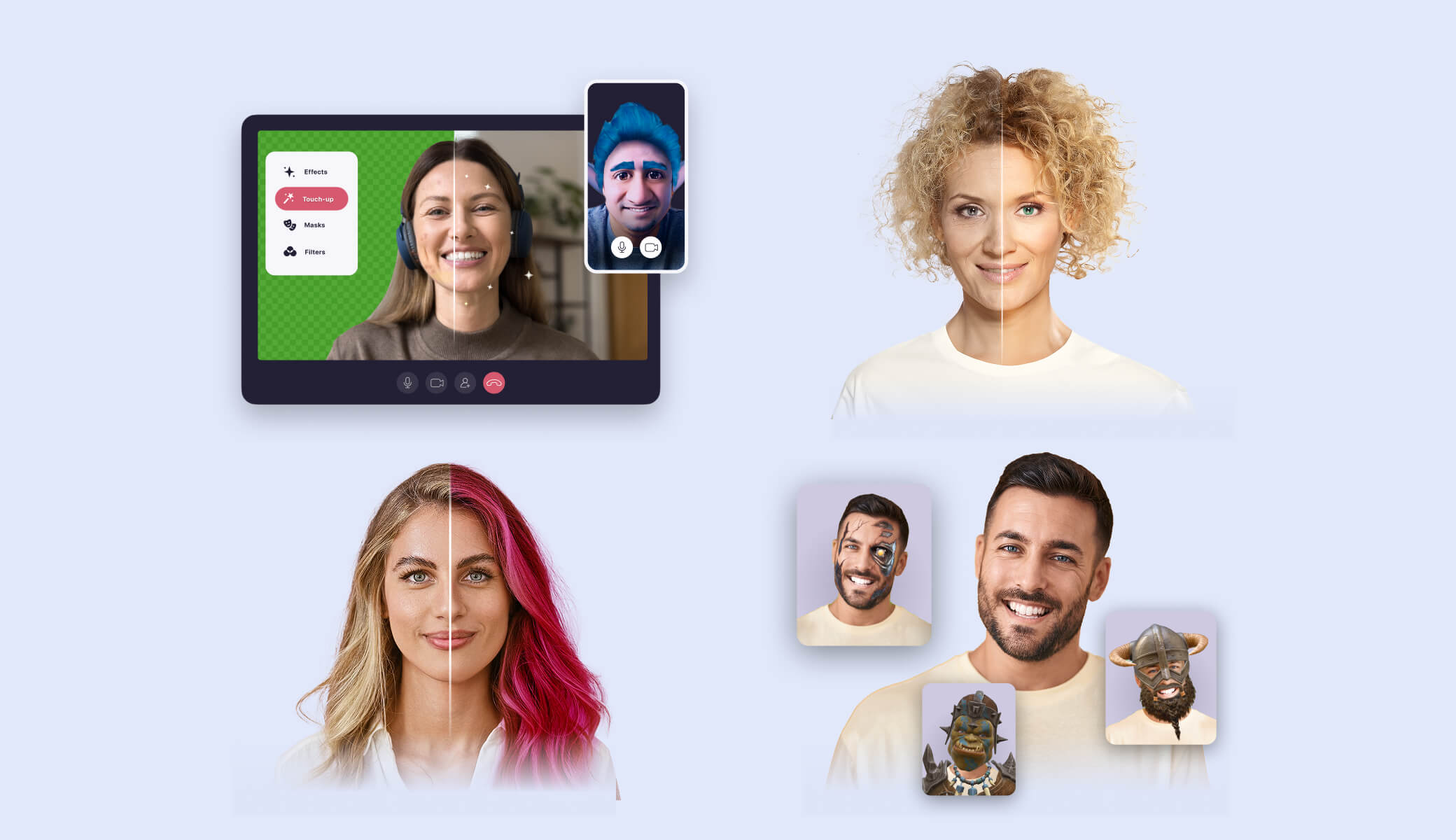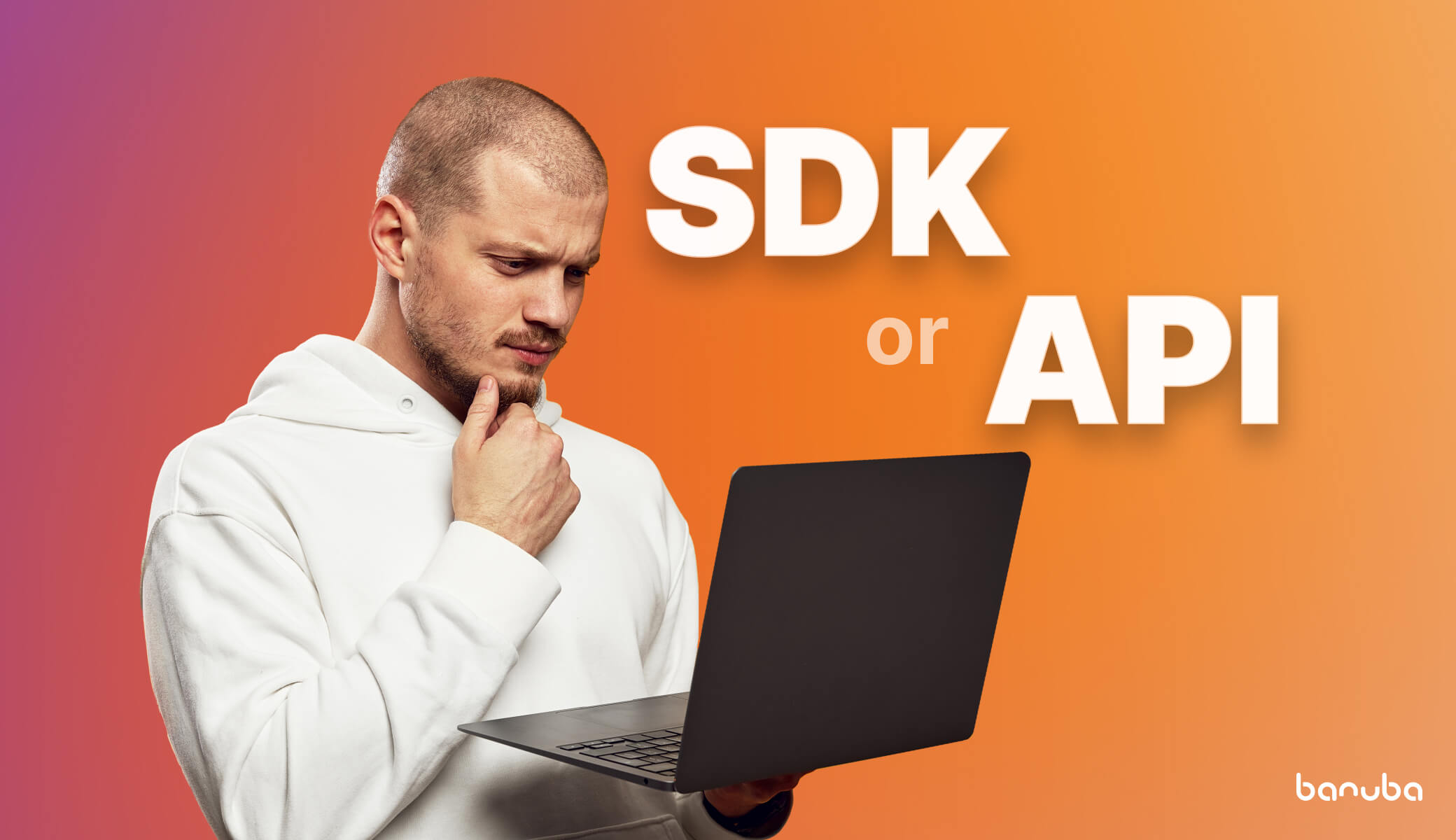How to make a camera filter app? 5 things to consider first
Face filter apps are a bandwagon that everyone is jumping on. There is enough space for you on the Augmented Reality (AR) market, which was supposed to reach USD 60 bln last year. So if you want to build an app like that, this article will let you know where to begin.

1. Camera filter app type
“Camera filter apps” are an umbrella term. They include a ton of different options that you should be aware of. At least in case you need to pivot. After all, Instagram was a check-in app once.
Short video apps
Think TikTok and the like. TikTok itself got in hot water with the national regulators in Hong Kong, Japan, India, Pakistan, and the USA. This means the competing camera filter apps have a chance to grab their market share and profit. The users make short videos for fun, so spicing them up with some cool masks and beauty filters could make them even more enjoyable.
Chingari is a great example of this. The founders took advantage of New Delhi’s ban on TikTok and quickly gained millions of users. Other social media companies can follow their example.
Note that there is a difference between live face tracking filter apps that add overlays in real-time (e.g. TikTok) and the ones that add filters as part of the post-processing.
eCommerce
According to the research, 61% of online shoppers prefer to buy from websites that offer AR objects to check out. This is especially true for the times when going to a brick-and-mortar store could be a health hazard.
In the cases of glasses, cosmetics, headwear, and other similar items, virtual try-on is almost like in the real world. It allows people to check out the true colors, textures, and even physics of the goods. This increases sales, as the customers return for more.
Communication apps
This is your category if you want to build an app like Snapchat or Zoom. Background filters can make a business meeting more professional by hiding or replacing the apartment with board room decor. Or, on the contrary, add an extra degree of fun with face filters.
You can also add beautification, to make sure the users always have smooth skin, bright eyes, and perfect hair.
The right filter at the wrong time
AR effects can be implemented within an app or as an add-on. For example, Agora SDK is known for the high quality of its sound and video communication. And the developers have сreated an open platform for third parties that could add extra functionality. Including camera filters.
Entertainment
This category includes games, karaoke apps, and other recreational projects that could benefit from some face tracking AR filters. Social games can use filters too: to make the players look cool or even to control their characters with facial expressions.
eLearning
For the last decade or so, gamification has been a major trend in digital education. It increases user engagement and improves learning outcomes, so both academic and corporate training centers use it a lot. And it just so happens that camera filter app functionality is a solid way to implement gamification.
AR masks can help users put on personas when roleplaying, serve as rewards for specific achievements (e.g. using the app for 10 days in a row), attract younger audiences, etc.
Dating
Matchmaking apps keep evolving with the world. Video chats are skyrocketing in popularity which means so do AR features: beautification, background replacement, face filters, etc. This kind of camera filter apps is going to remain popular for the foreseeable future, as by 2031 about 50% of couples will have met on one of them.
2. Positioning
This is the step to determine the difference between your app and your competitors and narrow down the target audience.
For example, you want to go for a video calling app. Professional and casual callers will have completely different requirements aside from the image and sound quality. Funny face filters, for example, are usually inappropriate for a board meeting. However, they are perfectly fine for friends and family.
Compare Slack and Discord. Both are messengers with similar feature sets. But the former positions itself as a business communication app, while the latter targets gamers.
Knowing your target audience and positioning helps make informed decisions about the design, advertising, functionality, and other aspects of the app.
3. Platform
There are three common platforms where a camera filter app can thrive: web, mobile, and desktop.
Web AR is the cheapest in terms of building and maintenance. Such apps will also run on almost anything with a camera and a browser, thus giving you access to the largest possible number of users. However, it is also the weakest in terms of performance and image quality, as Web AR can’t access as many resources as other forms. It also can’t work offline, for obvious reasons.
Mobile AR covers iOS and Android. Even when you use React Native or Flutter to make a hybrid application, you will still have to support both OSes, so the maintenance isn’t as cheap as it could’ve been. However, smartphones are ubiquitous and they are able to provide a much better image than the web. Mobile AR can work offline.
Desktop devices are also capable of working with AR. In most cases, this means either Windows PCs or Macs. This is the most powerful platform, however it is also the most limited in accessibility.
4. Monetization strategy
Self-expression and making the world a better place are much better if you are getting paid for it. The specific methods would depend on the kind of app you want to launch.
These are the options on the table:
- Ads. Once you have a decent user base, other companies could be interested in buying advertising. For example, you can offer to create custom AR filters in the style of the specific client. The users will apply these effects and thus promote the relevant companies. Branded filters like the ones businesses can buy on Snapchat are also a great form of advertising for such kinds of apps.
- Paid filters. While most masks are free, some special ones cost extra. You can price each of them separately, as a pack, or as part of a freemium package.
- Paid communication. This is similar to ads but deserves a special mention. Companies might pay you for the right to send messages to your users. On the one hand, this can be profitable. On the other, this can be somewhat annoying.
- Paid use. Perhaps the AR effects aren’t the core functionality of your camera filter app but they help in promoting the actual product. In this case, making it paid (either one-time or subscription-based) is justified. For example, FaceYoga is based around wellness programs and uses AR filters to showcase the potential results.
Free. There are apps that serve as advertising for other products or are intended for charity work. These can be left free-to-use, as their value is in the number of users they can attract.
3.How to make a camera filter app: development strategy
There are many ways to build an app.
In-house
You can always write the code yourself or hire the team to do it for you. This is the best option from the security and control perspective, as all the work would be done by your own people. However, it can also be costly and long. For example, an Android developer would set you back about USD 100k per year. Not to mention the cost of hiring, which can be up to 30% of the employee’s yearly salary. Note that the knowledge of AR is rare and costs extra.
Outsourced
This option means the development work will be done by a third party, whether in your home country or abroad. Finding a team is easier and cheaper than hiring your own. For example, a developer from Belarus or Ukraine could cost as low as USD 25/hr.
On the other hand, this means you have to share your information (app plans, business model, etc.) with the vendor. It can still be perfectly safe, though - as long as you find a reputable development company.
Mixed
Suppose you have a team of crack coders able to solve any technical problem. But no one in your company can design 3D models to save their lives. So you hire an external design team that would create backgrounds, video face filters (like in TikTok), or whatever else your app might need.
6. MVP features prioritization
MVP stands for “Minimum Viable Product”. In the case of software, this means an app that has enough functionality to be useful and different from the competition. Such an approach means that you can launch your product faster and cheaper. And should it fail, you risk less money and time.
Here’s the problem, though: how exactly should you pick these features?
There are two main techniques for that.
The first one is the “Value vs Complexity Quadrant”
The “value” axis represents the, well, value that the feature brings. The position on the “effort” axis shows how much time and money the feature would take to build. The upper left quarter contains the features that are definitely worth including in the MVP. At the bottom right are the no-nos.
For example, you are building a Snapchat-like messenger. Some of the features could be:
- Self-deleting photos
- Messaging
- Face filters
- In-app currency
Self-deleting photos are an absolute must-have. They bring a lot of value and don’t require much development work. Upper left quadrant.
Messaging is just as important. It can be implemented based on open source libraries, so it also goes to the upper left.
Filters and effects. Call them “Lenses”, “Masks”, or anything you like, this is the feature that can make your product stand out. Developing it on your own is very time-consuming. But there is a catch. You can save up to 40% of development time on this feature by using premade augmented reality software development kits (AR SDKs). You can find ones for both picture and video apps.
Anyway, this one goes into the upper right corner (without SDKs) or the upper left one (with SDKs).
In-app currency. The in-app currency is useless without something to sell. So the value of it is questionable. But processing real money used to buy the in-app one is hard work. In the end, this goes to the bottom right quadrant.
The second approach is the “Weighed Scoring”.
In essence, it is the same, only instead of placing the feature on a board, you assign them a certain value according to the benefits they bring and the effort they take.
7. Using an SDK vs building from scratch
Camera filter apps use cutting-edge technologies. As a result, to build them, you need a team well-versed in computer vision, machine learning, AI, and other relevant disciplines. Not only are such specialists rare, but they also command high prices. Most startups and SMEs can’t afford them. And for large companies that don’t have software development as a core business, such a team is unreasonably expensive.
In these cases, it is better to use an augmented reality SDK (or an AR library) - a ready-made module that can be quickly integrated into an app and perform specific functions. SDKs are usually well supported, have extensive feature sets (if they have been on a market for at least a couple of years), and their licensing payments are way less than the upfront costs of a dev team.
5. Promotion strategy
“Build it and they will come,” said no successful modern startupper. You have to let your audience know that your product is the best photo/video filter app out there. Describing each option in detail would take an obscene amount of space. We will give you the basics, so you can choose on your own. This is what’s commonly used in the industry:
- Contextual ads (PPC). Whenever you search for something, Google or other search engines will show you advertising. To join in, you need to choose the right search terms for your ads. Usually, this means the balance between the search frequency and the cost of one click.
- Search engine optimization (SEO). This is all about making sure your website shows up whenever your potential users look for something relevant. Both on-site SEO (everything you do with your website) and off-site SEO (e.g. getting links from reputable third-party places) matter here.
- Content marketing. Publish content that brings value to your prospective users and makes them want to install your app. It goes hand-in-hand with SEO. For examples of said content, check out our blog. Who knows, you might find more interesting stuff there.
Conclusion
The conditions on the face filter app market are favorable for newcomers. However, no one says making your own photo/video face filter app is going to be easy. You’ll need to pick the right niche, the monetization strategy, and the right development team. Choose the right features for the first release and promote your app well, and your hard work will pay off.






